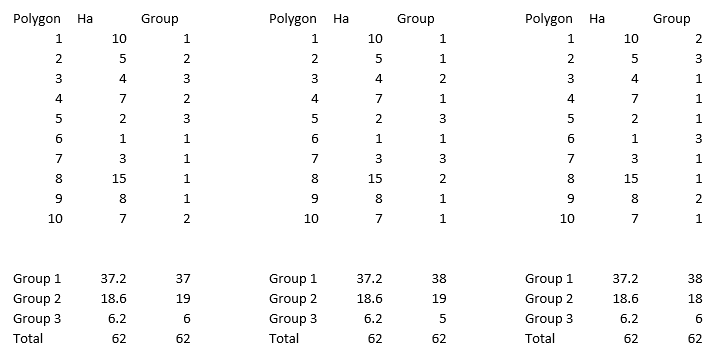Hi all,
I am trying to find an FME solution to an optimisation problem.
I have ‘x’ polygons of varying sizes, the combined area of these polygons adds up to ‘y’. I need to allocate these polygons across ‘z’ number of groups, each of which require a different proportion of ‘y’.
For example:
· 10 polygons (x) of varying sizes with a combined total area of 62ha (y) that need to be proportionally allocated across three groups (z)
· Group 1 – needs 60% of y (37.2 ha)
· Group 2 – needs 30% of y (18.6 ha)
· Group 3 – needs 10% of y (6.2 ha)
Possible solutions:
 I am after an optimised solution for the groupings of these polygons (in the above example, the first solution would be considered the closest to the allocation requirement).
I am after an optimised solution for the groupings of these polygons (in the above example, the first solution would be considered the closest to the allocation requirement).
Please note, I do not need to worry about the spatial position of these polygons, I just need to determine the best group allocation of each polygon so that I end up with the closest possible required outcome for each group.
Thanks!









